Table of contents of the article
ToggleThe olive tree bark beetle is a harmful insect that feeds on the inner parts of the branches, leading to a deterioration in the health of the trees. This article from the “WORLD OF PLANTS” website discusses methods of prevention and control.
Symptoms of the olive tree bark beetle
- Scientific name :Hylesinus oleiperda
- the family : coleoptera
- Dryness of small and medium branches, and the appearance of numerous holes adjacent to each other horizontally on the affected branch.
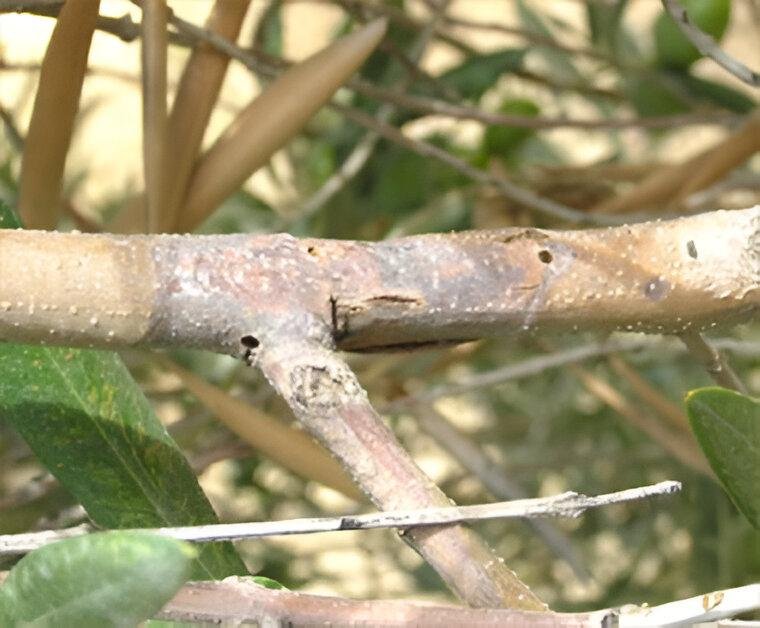
Description of the olive tree bark beetle
The length of the insect is (3 mm). Its shape is oval. The body color is dark brown, covered with short, dense yellow hairs. The antennae are scepter-like, reddish-black, and there is an unclear outline on the sheaths. The larvae are white and legless. The head is relatively yellowish brown, and the chest rings are enlarged.
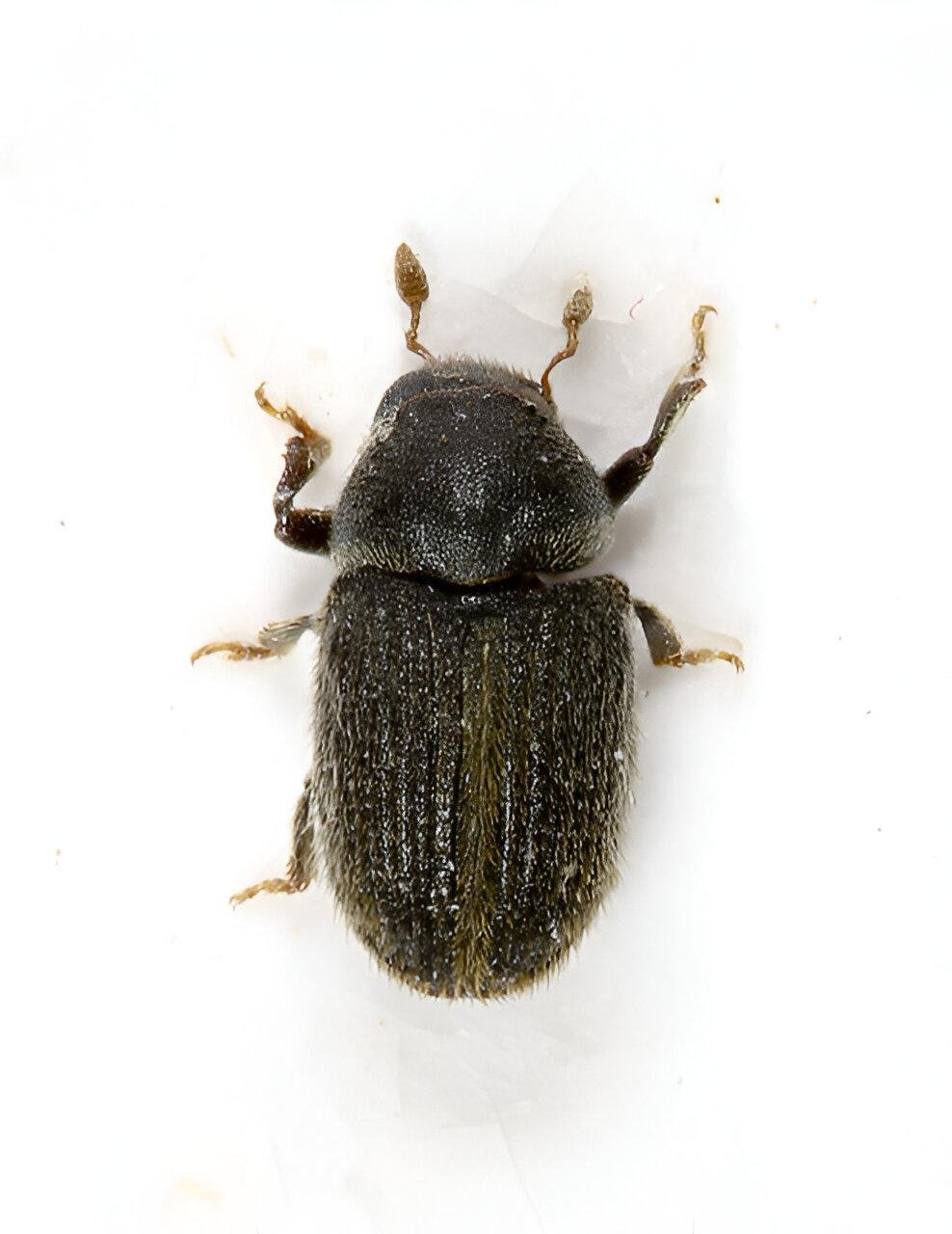
Causes of olive tree bark beetle
- Constant use of chemicals.
- Years in which there is less rain than rainy years because a lot of rain causes the tree to grow, so the trees’ resistance increases.
Suitable conditions for the spread of the olive tree bark beetle
- Trees are weak or small.
- Not pruning.
Development cycle of the olive tree bark beetle
It has one generation per year, and its appearance coincides with the flowering of olive trees in the month of May. Eggs are laid throughout the summer, with single females laying up to 19 eggs
After mating in the month of May, the females dig a tunnel in which they feed. When they come into contact with wood, they lay eggs along the breeding tunnel. The worm larvae make vertical tunnels on the tunnel of the mother insect. The larval stage lasts from June until the next May, then the insect turns into a pupa and then into a fully fledged insect. Early June to restart the life cycle.
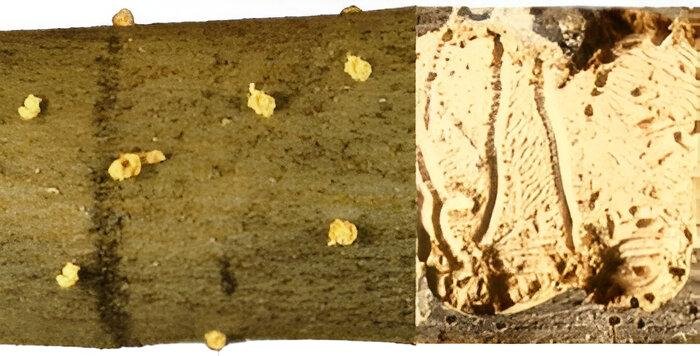
Losses from the spread of the olive tree bark beetle
- Olives fall and buds dry
- It weakens the tree's growth.
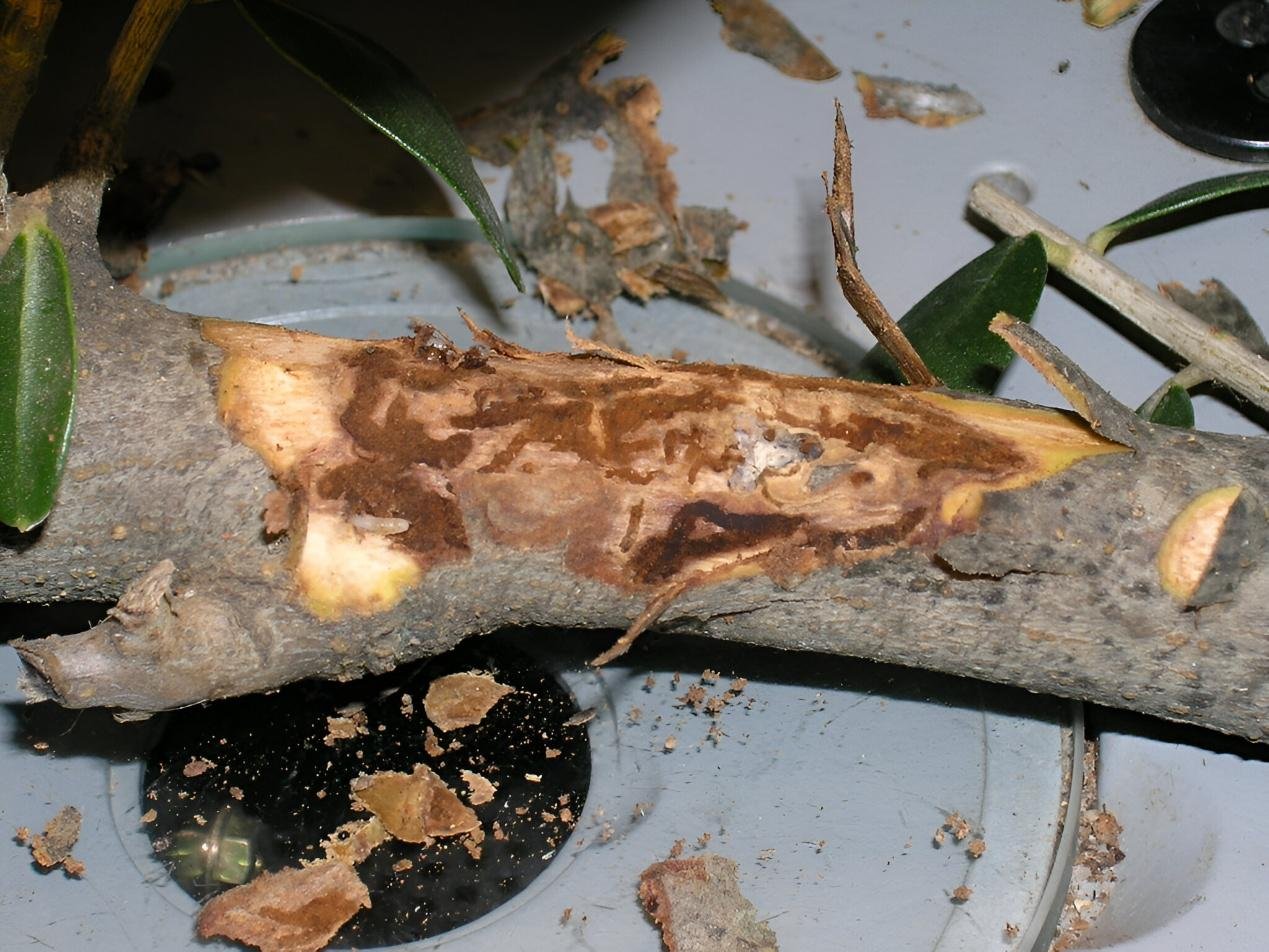
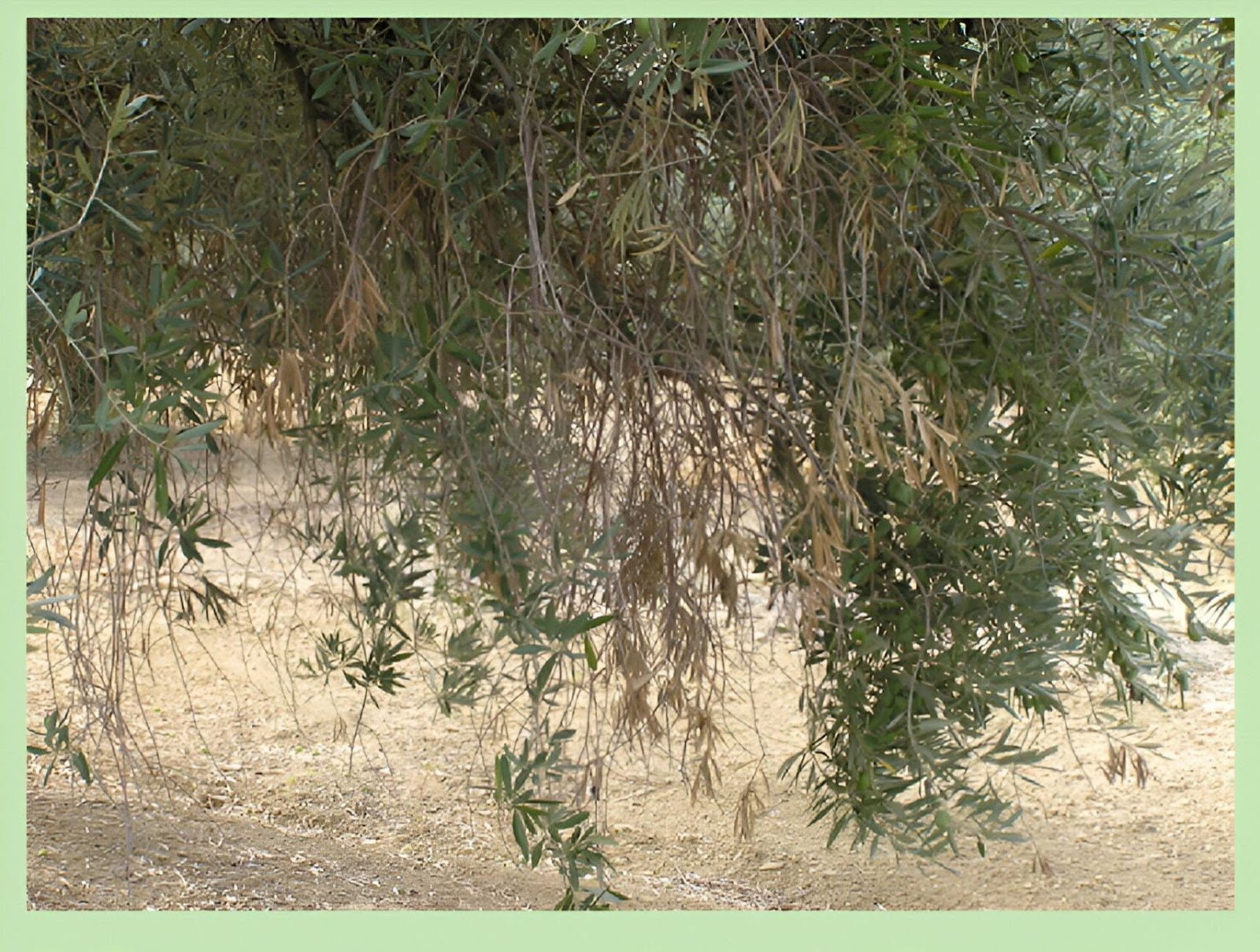
Strategy for combating the olive tree bark beetle
Preventive measures to prevent the occurrence of the olive branch bark beetle
- Avoid water stress.
- Application of regenerative pruning.
- Destroy symptomatic branches before the departure of adults (between March and May).
- Taking care of agricultural operations, including fertilization, irrigation, and pruning.
Chemical and organic control recommendations
- Parasitism by two important species of Hymenopteran parasites: Cheiropachus Quadrum F. (Pteromalidae) and Dendrosoter protuberans (Braconidae)
- The pesticides carbaryl and parathion gave good results, and methidathion gave some control
- Allow the driller to do the placement on the olive tree branches. After a few weeks of pruning, we destroy the branches before the larvae become adults
In conclusion, we would like to note that we, at the world of plants website, offer you all the necessary services in the world of plants, we provide all farmers and those interested in plants with three main services::-
- Artificial intelligence consulting service to help you identify diseases that affect plants and how to deal with them.
- Blog about plants, plant diseases and care of various crops ... You are currently browsing one of her articles right now.
- An application that provides agricultural consultations to clients, as well as a service for imaging diseases and knowing their treatment for free – Click to download the Android version from Google Play Store، Click to download the IOS version from the Apple App Store.
References
- Graf, P. “A contribution on the biology and control of Hylesinus oleiperda F.(Coleopt., Scolytidae) on olive in the Tadla (Morocco).” Zeitschrift fur Angewandte Entomologie 83.1 (1977): 52-62.
- Jardak, T., M. Moalla, and M. Ksantini. “Mortality factors affecting populations dynamics of the scolytid Hylesinus oleiperda Fabr.(Coleoptera, Scolytidae).” IV International Symposium on Olive Growing 586. 2000.
- A contribution on the biology – cabi digital library
- MORTALITY FACTORS AFFECTING POPULATIONS DYNAMICS OF THE SCOLYTID HYLESINUS OLEIPERDA FABR – actahort
- Olive tree borer – excelentes precios




